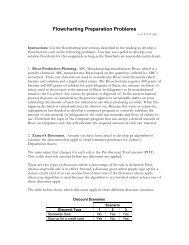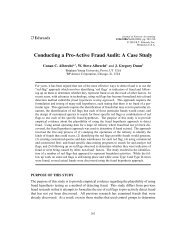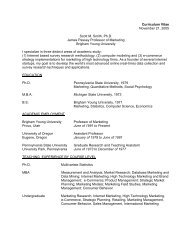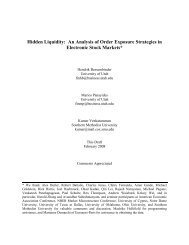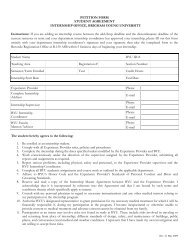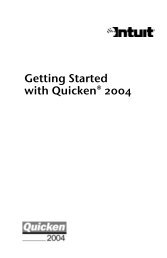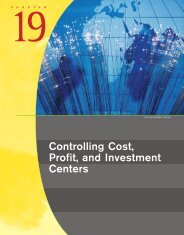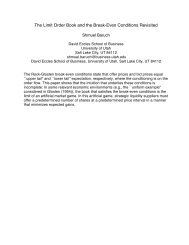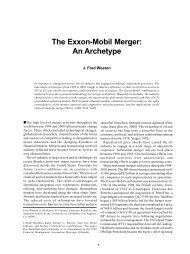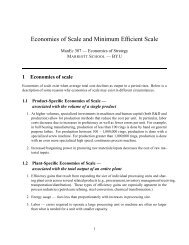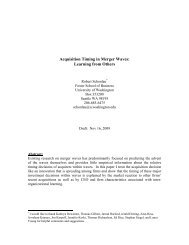why do firms go public? - Marriott School
why do firms go public? - Marriott School
why do firms go public? - Marriott School
Create successful ePaper yourself
Turn your PDF publications into a flip-book with our unique Google optimized e-Paper software.
The replies, reported in Brau and Fawcett (2006a) Table II (pg. 407) surprised the<br />
authors. The number one motivation for an IPO revealed by CFOs (in the aggregate) was to<br />
create <strong>public</strong> shares for use in future acquisitions (nearly 60% agreeing) – see also Brau and<br />
Fawcett (2006b) Figure 1 (pg. 108). This possibility was motivated by discussions with Professor<br />
James Ang when I was one of his students around 1997. I included it as a hypothesis in Brau,<br />
Francis, and Kohers (2003), which led to Brau and Fawcett (2006a), which in turn led to Brau,<br />
Couch, and Sutton (2010). (Just a note, Kohers and Sutton are the same coauthor, Ninon’s<br />
maiden name is Kohers.) Graham and Harvey (2001) <strong>do</strong> report that nine of their surveyed <strong>firms</strong><br />
indicated that they issued common stock because it is the preferred currency for making<br />
acquisitions (pg. 210); however, this represents only 2.3% of their sample (of private and <strong>public</strong><br />
<strong>firms</strong>).<br />
In the aggregate, Brau and Fawcett report that the following motivations for an IPO<br />
received “low support”: minimize cost of capital/optimal capital structure, pecking order of<br />
financing, and to create an analyst following (see their Appendix C). The following received<br />
“moderate support”: as a cash-out tool, to increase the <strong>public</strong>ity/reputation of the firm, and to<br />
allow more dispersion of ownership. Along with creating <strong>public</strong> shares for acquisitions, to<br />
establish a market value for the firm received “strong support.” These conclusions are all based<br />
on aggregate responses. Brau and Fawcett (2006a) also parse the data based on IPO status<br />
(withdrawn, successful, not tired), size of the firm (revenues), age of the firm, high-tech status of<br />
the firm, underwriter prestige, venture capital backing, insider ownership decrease, overhang,<br />
IPO demand, and initial return hotness. For the aggregate sample, Brau and Fawcett report the<br />
mean of each CFO response and the percentage of CFOs who reply either 4 or 5. For all of the<br />
subgroups, they report only the means.<br />
27



